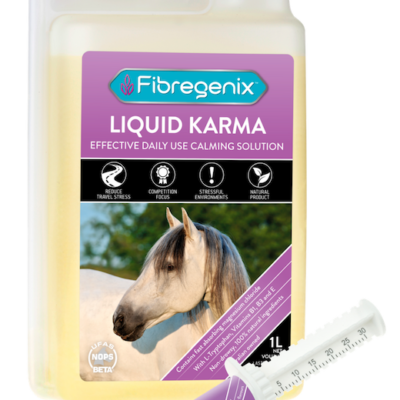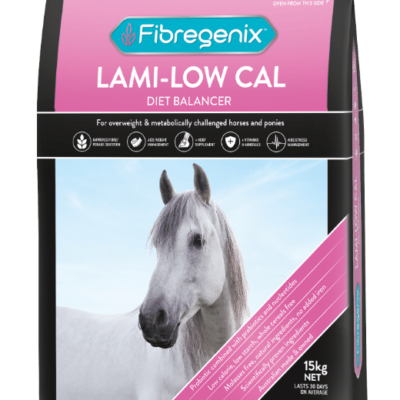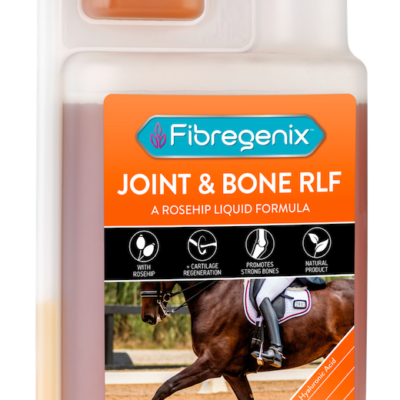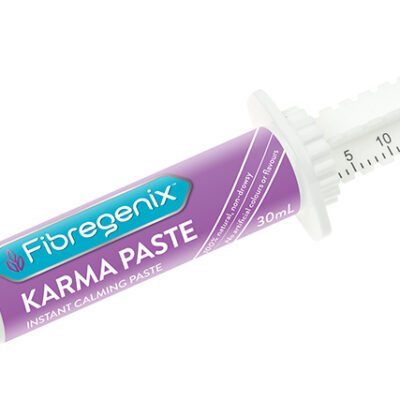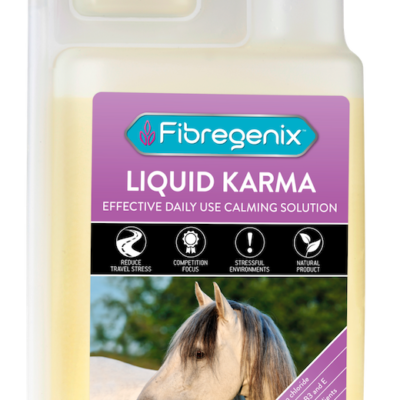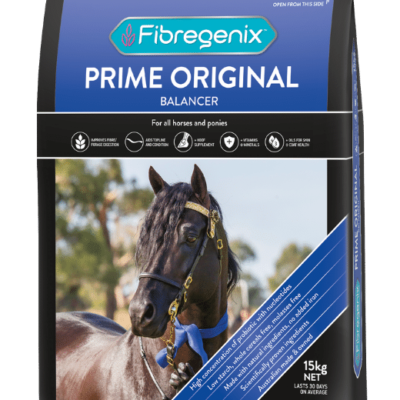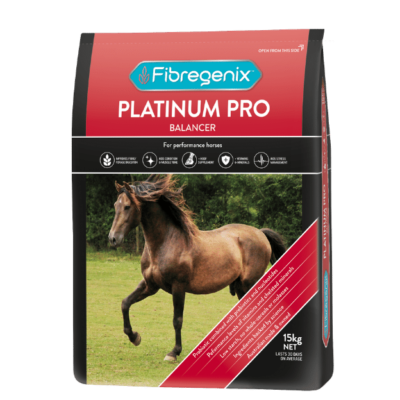Apr 29, 2024 | Digestive health
Feed balancers help to provide a more natural diet
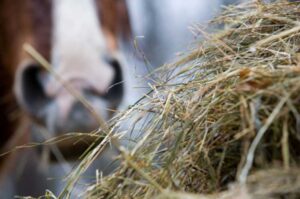 The demand for feed balancers reflects a greater understanding of nutrition and gut health. We’re all aware of the importance of providing a more natural, high-fibre diet. Fibregenix feed balancers do much to support this way of feeding. They do this by promoting good hind-gut function through the inclusion of ingredients such as yeast cultures.
The demand for feed balancers reflects a greater understanding of nutrition and gut health. We’re all aware of the importance of providing a more natural, high-fibre diet. Fibregenix feed balancers do much to support this way of feeding. They do this by promoting good hind-gut function through the inclusion of ingredients such as yeast cultures.
Although we all talk about providing a balanced diet, there’s always an element of guesswork involved in feeding horses. How many of you have grazing or hay analysed? Do you weigh every feed or haynet? How do you know how much your horse has eaten during his day in the field?
Fibregenix feed balancers – a simple solution
Fibregenix feed balancers are ideal for the modern horse owner because they can provide a simple solution to many common problems.
Their combination of concentrated key nutrients means you don’t need to add further supplements. Furthermore, a small amount offers maximum feed utilisation and fibre digestion. This means that these products do several jobs at once and can save time and money.
Which feed balancer should I feed my horse?
Despite their popularity, many of us are still confused about feed balancers. They are easily confused with horse and pony pellets or compound mixes. Of course, they’re neither – although seen as supplementary feedstuffs, they are in a category all of their own.
Fibregenix balancers are low in calories and provide essential nutrients, but not energy. They’re an especially convenient and effective means of feeding horses at maintenance or light work where they balance a high-fibre diet. Additional energy sources eg straights or compound feeds can be added alongside them if your horse is in harder work.
Be mindful of recommended daily feeding levels
Many people rely on estimation when it comes to feeding their horses. So a few grams over or under the recommended daily feeding levels can soon mount up.
Take the horse owner who feeds a compound feed plus a feed balancer. They then throw in a broad spectrum vitamin-mineral supplement or a vitamin E and selenium supplement for good measure. This person certainly doesn’t sit down and calculate the amount of selenium his horse is getting.
It’s easy to give our horses too many nutrients by feeding such a mixture of products. And with supplements, it’s not always the case that more is better. Of course, some surplus nutrients will simply be excreted from the body. But others, eg selenium and vitamins A and D, can cause toxicity problems if fed in excess.
Therefore it’s important to understand what you are feeding when considering a combination of nutritional supplements, compound feeds and feed balancers. This is particularly relevant if the horse is in harder work.
These horses are traditionally more likely to be on a high level of compound feed along with a feed balancer. Sometimes they may also be given an additional feed supplement. At Fibregenix, we’re mindful of the potential problems that such horses face. Therefore we formulate our feed balancers with a margin of safety in key nutritional areas.
Opting for the highest possible specification of feed, then adding other ready-balanced feeds and vitamin and mineral supplements isn’t a good idea. this is because you could push the horse’s nutritional balance over the edge, potentially causing toxicity.
Fibregenix Feed Balancers help to keep things simple
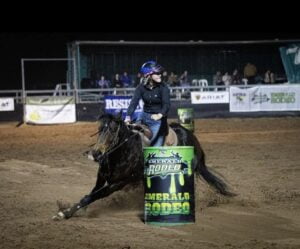
Barrel racer horse fuelled with Fibregenix
It’s all too easy to jump on the latest bandwagon or feed the most attractive product. As horse owners, we obviously want to feel that we’re doing the best for our horses. However, by adding various ingredients to the ration, we’re often fulfilling our own need, but not necessarily that of our horse.
Feeding should be about keeping it simple, which is why Fibregenix feed balancers are such a wonderful concept. They offer a wide range of benefits in a single, concentrated pellet. And, for the horse in light to medium work, can simply be added to the basic forage diet.
For horses in harder work, a Fibregenix feed balancer can also be a key ingredient. Working horses tend to be on higher levels of cereal feed. Coupled with facing the stress of training, travelling and competing, these scenarios can adversely affect the digestive system.
Choosing a Fibregenix feed balancer containing both prebiotics and yeast cultures can help support a healthy digestive tract. This enables your horse to take more out of his diet, so less hard feed can be given without compromising performance.
Fibregenix‘s Platinum Pro performance balancer is specifically formulated for the fit performance horse. It contain nutrients aimed at enhancing fitness and stamina, as well as speeding recovery rates after exertion.
Do horses need a Fibregenix feed balancer?
Our advice to horse owners is to keep their horse’s feeding programmes as simple as possible. Stay with a regime that suits you and your horse.
Many problems arise from over feeding, so you must regard your horse as an individual. Try firstly to fulfil his basic needs for a high-fibre diet, plus high quality vitamins and minerals. Then you can always add an extra source of energy if he requires it for work or weight gain.
Overview of a Fibregenix feed balancer for your horse
- Our balancers aim to ‘balance’ the entire dietary ration by complementing less-nutritious elements.
- They are versatile, and address many common nutrition problems in one step by providing a range of essential nutrients.
- They create optimum conditions for an efficient digestive system.
- Our feed balancers are designed to enable the horse to utilise the various elements of the diet. This means owners can feed fewer concentrates which puts less strain on the horse’s digestive tract.
- Certain vitamin and minerals can, if fed in excess, cause toxicity. Our high-quality feed balancers fed at the recommended inclusion rate negates the need for extra supplementation.

Sep 16, 2021 | Digestive health, Feeding for different activities
FEEDING RACEHORSES
When it comes to feeding racehorses, their nutritional requirements fall in the extreme category level of feeding.
Such a high exertional effort requires plenty of fast release energy of the type supplied by a carbohydrate rich diet. Unfortunately, with most trainers adhering to a ‘traditional’ system, the resulting dietary practices conflict with the digestive physiology of horses. The inappropriate concentrate/forage ratio levels fall way outside the parameters for the horse’s natural diet of fibre and trickle feeding. The result is digestive disorders which can affect performance, immune health and behaviour. In fact, gastric and hindgut ulcers are the most common problems with any athlete horse fed high levels of starch.
However, attitudes are gradually changing, and many forward-thinking trainers are starting to look for more suitable alternatives. More importantly, they are understanding the benefits that feeding more fibre to their racehorses can bring.
CAN A FEED BALANCER SUPPLEMENT BE A BENEFICIAL ADDITION WHEN FEEDING RACEHORSES?
Recently, feed balancers are also fast becoming a part of that innovative change. This is due to their level of nutrients and the digestive benefits they can provide. Fibregenix Platinum Pro is a nutrient dense feed balancer supplement that can help improve your racehorse’s performance. And ultimately, it can result in an increased strike rate.
This technically advanced feed balancer is designed specifically for the fit performance horse. Its unique formulation delivers the optimum balance and level of each nutrient with a synergistic effect promoting optimum health and performance.
WHAT DOES PLATINUM PRO PROVIDE:
- quality digestible protein supplying all essential amino acids
- an enhanced and comprehensive vitamin and chelated mineral package
- nutrients to promote blood building ie iron, organic copper, vitamin B12 and folic acid to assist in haemoglobin formulation
- a powerful combination of antioxidants to promote a healthy immune system
- beneficial levels of key nutrients for hoof health
- high oil content
- a quadruple action digestive and gut health package
Fibregenix Platinum Pro is also invaluable for the preparation of yearling sales. Transitioning from grass to a high starch diet all too often results in scouring or ulcers. However, the comprehensive gut health package in Platinum Pro can help reduce the risk of digestive upsets from such exposure. The result is a happier, healthier yearling with great muscle tone and condition giving you a better return on your investment.
WHAT DOES THE DIGESTIVE AND GUT HEALTH PACKAGE COMPRISE OF?
LIVE YEAST PROBIOTIC
The quadruple action digestive package includes a specific equine-approved live yeast probiotic. This probiotic aids the improvement in the breakdown of fibre so it is utilised more efficiently. Actisaf live yeast probiotic has been proven in studies to reduce lactic acid accumulation and maintain a more stable PH. Additionally, it can help to prevent common problems such as colic and gastric and hindgut ulcers induced by hindgut acidosis. The result of lactic acid accumulation.
PREBIOTICS
Fibregenix Platinum Pro also includes two prebiotics – PROFEED FOS and Safmannan MOS.
OVERVIEW OF PROFEED FOS
This specific FOS is made up of short chain fructo-oligosaccharides, providing a feed-source for the beneficial micro-organisms in the gut. A daily starch intake of more than 2% body weight/day increases the amount of starch reaching the hindgut. This can have a negative effect on the microbial fibrolytic activity, affect fibre degradation, and lead to digestive disorders.
KEY BENEFITS:
PROFEED® helps to limit the risk of digestive disorders in adult horses and yearlings. It does this by modifying the faecal microbiota by increasing Lactobacilli/E. coli ratio and limiting growth of potentially pathogenic bacteria.
Mode of Action & Proven scientific support:
Numerous reports, trials and now dossiers to support the use of Profeed, which may:
- Positively modify the gut microflora
- Enhance digestive health
- Reduce the risk of digestive upsets
- Aid in the reduction of putrefactive compound production
- Strengthen the immune system (GALT)
- Improve insulin sensitivity in the obese horse
OVERVIEW OF SAFMANNAN MOS
Safmannan MOS is a premium pure saccharomyces cerevisiae yeast fraction rich in mannan-oligosaccharides (MOS) and β-glucans. Derived from primary inactivated yeast, it supports a healthy immune system and may increase its reaction capacity.
With the digestive system already compromised through the stress of racing and travelling, there can be a large population of ‘bad’ gut bacteria. And this occurs despite the presence of thriving beneficial bacteria. An unhealthy gut environment negatively affects the general health of the horse. So Safmannan MOS prebiotic attracts these harmful bacteria and prevents them from binding to on the gut wall. Once bound to the MOS, they cannot be released so they are rendered useless and ‘flushed out’ of the digestive system.
Key benefits:
- It helps to improve gut health by ensuring a better capacity to absorb nutrients and cope with challenging environmental conditions.
- Increases zootechnical performances including average daily gain and feed efficiency especially in challenging conditions. For example pathogen pressure or heat stress.
- Enhances immunoglobulin production during gestation. This improves the quality of the colostrum and the transfer of immunity from the mother to its offspring at birth.
Mode of action:
MOS binds a broad spectrum of major pathogens (eg E.coli, Salmonella) thanks to its high content in mannanoligosaccharides. It does this by reducing their attachment onto the intestinal mucus and also provides the following benefits:
- Helps to raise animal natural self-defences
- Enhances humoral immune responses under challenging conditions
- Improves cell-mediated immune response to disease
- Protects the villi and maintains gut integrity whilst strengthening the intestinal barrier.
PURIFIED NUCLEOTIDES
Fibregenix Platinum Pro contains a blend of purified nucleotides. These essential nutrients support muscle recovery and tissue regeneration after strenuous exercise. They also help support red blood cell production, which assists oxygen delivery to muscles and aids nutrient uptake.
Independent scientific trials* on thoroughbred racehorses proved that the benefits of nucleotides to high performance horses include
- improved oxygen consumption, improved recovery rates, improved carbon dioxide production
- reduced levels of stress hormones
- reduced levels of lactic acid
* Nucleotide supplementation trial on exercising thoroughbreds at the University in Liege (Belgium) Dr T. Art and Prof P. Lekeux – ref Vet Res (1994) 25, 361-370
PROFEED Research and Study References:
Treiber, K.H., et al., Insulin resistance and compensation in Thoroughbred weanlings adapted to high-glycemic meals. Journal of Animal Science, 2005. 83: p. 2357-2364.
Respondek, F., et al., Effects of short chain fructooligosaccharides on the microbial and biochemical profi les of different segments of the gastrointestinal tract of horses. Pferdeheilkunde, 2007. 22(2/2007): p. 146-150.
Berg, E.L., et al., Fructooligosaccharides supplementation in the yearling horse: Effects on fecal pH, microbial content, and volatile fatty acid concentrations. Journal of Animal Science, 2005. 83(7): p. 1549-1553.
Faivre, L., et al., Changes in intestinal microbiota activity and immune response in horses submitted to scFOS supplementation followed by EHV1-EHV4 vaccination. Submitted in Equine Veterinary Journal.
TAKE HOME MESSAGE:
Fibregenix Platinum Pro is a premium quality nutrient dense balancer supplement specially formulated for high bioavailability. It’s fed in very small quantities (100 grams per 100 kilograms of bodyweight). Crucially, this means that once a racehorse has been on Fibregenix for a while it may be possible to reduce hard feed which is more beneficial to the horse’s digestive system.
TRAINER TESTIMONIAL: Another winner! Since using Fibregenix these past few months we have had more wins and places than ever. Recently, Amber Mamba ran 1st a couple weeks ago – Ridinghood Fame ran 3rd today. Glad I convinced my hubby (Bill Spencer) to switch to Fibregenix.

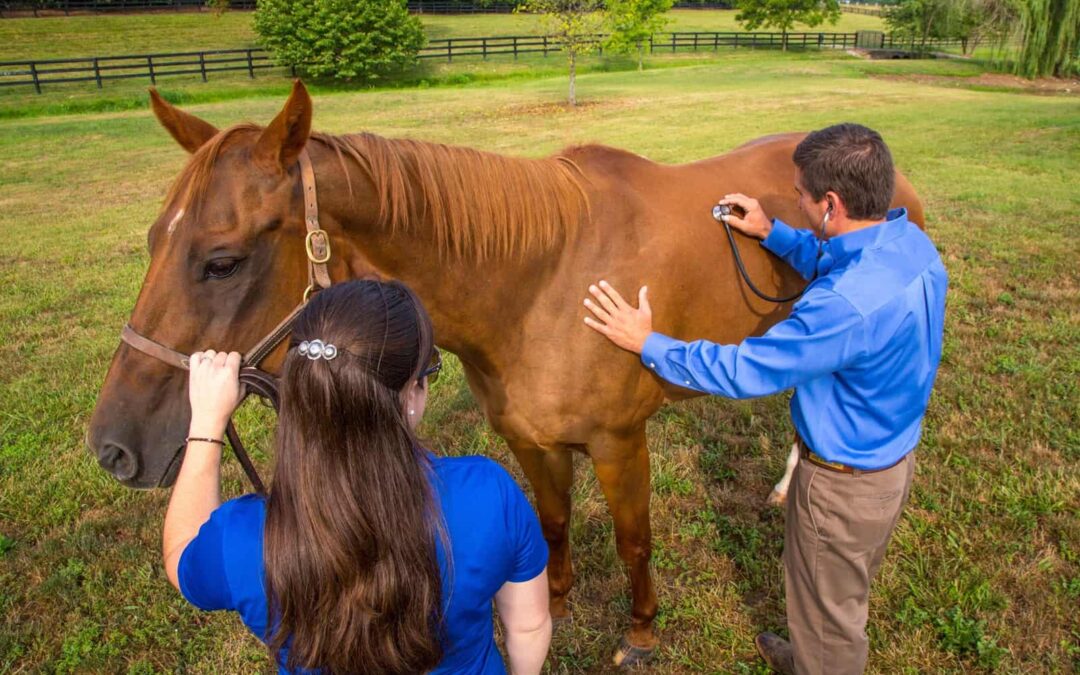
Sep 3, 2021 | Digestive health
Hindgut Ulcers – Your Ultimate Guide
Preventing and managing hindgut ulcers is becoming an all-too-common scenario. What was once thought to be fiction has rapidly become more of a fact. Particularly as research into this area of digestion has evolved. With a positive diagnosis, it’s easy to feel as if your world has come crashing down. However, with the help of this ultimate guide, find out how to manage this problem and get your horse back to feeling healthy and happy.
When we talk about the horse’s hindgut, we’re referring to the digestive area from the cecum to the rectum. The primary function of the hindgut is to digest fibre and convert it into useable energy from volatile fatty acids. High levels of this fermentative microbial digestion take place in the caecum by microorganisms, yeast, and friendly bacteria. 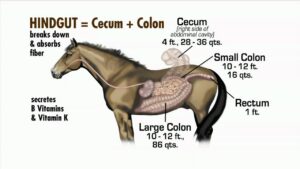
The normal acidity (PH) level in the hindgut is around 6.2. When the acidity in the hindgut is raised it lowers the pH. Lactate-producing and lactate-utilizing bacteria (bugs that cause issues) get strong in an environment with a low pH. They then start producing lactic acid rather than volatile fatty acids. This change in the microbial populations and acid profiles is what creates hindgut acidosis.
What causes this change to occur?
It’s caused by large quantities of undigested simple carbohydrates reaching the hindgut and producing lactic acid. These are usually starches and sugars found in processed grain feeds or rich pasture. This drop-in pH may reduce mucous production, leaving the mucous membranes of the hindgut vulnerable.
Furthermore, when fiber-digesting bacteria die off because of hindgut acidosis, endotoxins are released into the bloodstream. The result of this can cause issues such as laminitis.
What are Hindgut Ulcers?
- Hindgut ulcers are also known as colonic ulcers and are often referred to by vets as Right Dorsal Colitis (RDC). This is because most hindgut ulcers occur in this part of the large intestine on the right side of the horse.
- All ages and breeds of horses are susceptible. Hindgut ulcers have been reported to affect 44 – 63% of horses and are estimated to occur in 65% of sport horses. These types of ulcers can go undiagnosed for months because horses are usually normal between acute episodes.
- When hindgut health is compromised, a horse may also have trouble absorbing important nutrients. This can result in poor coat and hoof condition, reduced immune function, and behavioural changes.
- Whilst hindgut ulcers are less common than gastric ulcers, a horse can have both at the same time.
A definitive diagnosis is difficult because a gastroscope (used to diagnose gastric ulcers) won’t reach the colon.
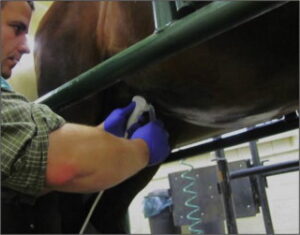
However, one definitive method of diagnosis is a Transabdominal ultrasound. This type of ultrasound takes specialized equipment and skill on the part of the vet. If the ultrasound shows a thickened colonic wall, hindgut ulcers are likely to be diagnosed. If you’re concerned about hindgut acidity, ask your vet to test faecal pH first.
Symptoms:
Horses affected by hindgut ulcers may experience a progression of signs such as
- decreased performance, lethargy
- weight/topline loss
- reduced appetite
- diarrhea, intermittent soft manure, or “squirty” bum where some horses have a liquid component that follows passing otherwise normal manure
- mild intermittent or recurring colic
- a rough coat
- a change in attitude, sudden girthiness
- sensitivity in the flank area
- difficulty bending, collecting and extending
- blood in the manure
- chewing wood (cribbing)
- swelling (oedema) along the central midline of the belly
Why do Horses get Hindgut Ulcers?
- Stress for horses can be either physical (i.e. training and performance) and/or emotional stress (i.e. separation anxiety, floating). This leaves them at a higher risk for developing both gastric and hindgut ulcers. Additionally, stress, whether physical or mental, affects the horseʼs immune system.
- Hindgut acidosis. Usually, but not always, caused by starch overload or massive doses of pure fructan and insufficient forage. Horses with hindgut acidosis often have frequent low-grade colic, loose manure, and are off their feed.
- Overuse of non-steroidal anti-inflammatory drugs (NSAIDs). These should be used for no longer than 5-7 consecutive days. Overuse can lead to damage to mucosal membranes of the gut lining and interfere with blood clotting.
- Parasites including tapeworm, small strongyles, and others. These may also cause ulcers at the site where they attach to the intestinal wall.
- Disturbances to the gut microbiome. Eg excess levels of lactic acid are caused by a decrease in the pH level of the colon. This acidic environment may result in:
- Damage to the mucosal lining, resulting in compromised intestinal barrier function.
- Changes in the equine microbiome eg a proliferation of pathogenic bacteria and a decrease in the population of beneficial bacteria.
- Reduced defences against toxins in the gastrointestinal tract.
BE AWARE OF OTHER CONDITIONS that could look like RDC. These include
- Gastric ulcers
- Other causes of colic (large colon displacement and/or impaction)
- Infectious causes of diarrhea (Salmonellosis, Clostridium)
- Inflammatory bowel disease
- Cancer
Three Steps in the Prevention and Treatment of Hindgut Ulcers
Dietary management that prevents hindgut ulcers from recurring and to support the healing of the intestinal lining.
- Your vet may prescribe medications such as sucralfate or misoprostol.
- Reduce the amount of work the colon must do by limiting long fibre (hay) consumption. Replace it with short fibre eg hay cubes, pellets, or chopped hay.
- Offer small, frequent meals whenever possible to support gut health and improve nutrient absorption.
- Try feeding Psyllium. It can help lubricate and shorten the transit time for feed and roughage. It also increases water content in the intestines and fatty acid concentration in the colon and reduces inflammation.
- Feed to provide buffering to the hindgut i.e. beet pulp, soyhull husks
Minimizing stress is an important part of recovery from Right Dorsal Colitis. This can be done by:
- Reducing strenuous exercise or training
- Providing more turnout time
- Minimalising transport
By following as many of the above strategies, you can usually see a reduction in symptoms after 1-2 weeks. However, be aware that it can take two to three months for ulcers to fully heal.
Improve digestive health. Probiotics and prebiotics can be helpful.
Can Fibregenix Platinum Pro performance balancer help with hindgut ulcers?
Yes! Platinum Pro is invaluable in the management of hindgut ulcers. It includes 4 specific digestive aids. Actisaf Live yeast probiotic, purified nucleotides, MOS, and FOS prebiotics will tackle each of the points listed below. Each of these digestive aids has proven performance when it comes to gut health.
- For increasing the number of “good” bacteria and restoring gut health in horses with hindgut ulcers.
- To improve feed efficiency and support nutrient assimilation
- Supporting hindgut function and fibre fermentation
- Assisting in the combat of toxins by inhibiting their absorption from the gut
- Supporting the immune system by increasing immunoglobulin activity
Dietary Nucleotides are of particular interest. Here are 2 reasons why we’ve included them in our balancers for preventing and managing hindgut ulcers.
Dietary Nucleotides Improve Efficiency of Cell Growth and Repair
In general, DNA is synthesized through complicated de novo pathways. These pathways create fresh nucleotides from scratch rather than using existing material. However, in the presence of dietary nucleotides, the body can down-regulate DNA synthesis. And instead, it uses an enzyme named HGPRT to scavenge the intact nucleotides improving the efficiency of cell repair and conserving energy.
In addition to ongoing maintenance, cell division is critical for repairing damaged tissue, including ulcers. This is why in times of stress, dietary nucleotides have proven to be beneficial.
Dietary Nucleotides Increase Mucosal Thickness
Nucleotides optimize the natural protective mechanisms of the mucosal lining. This helps to maintain a healthy GI tract. Supplementing a horse’s diet with nucleotides increases mucosal thickness and protein levels through increased availability of genetic precursors. It also speeds up intestinal recovery after chronic diarrhea and intestinal damage.
Nucleotides play a critical role in the body in that they accelerate the cell regeneration process. Cell regeneration allows an animal to recover much quicker from the type of stress it is under (performance, illness, disease, injury, etc.).
TAKE HOME MESSAGE
Hindgut acidosis is a nutritional problem. You feed your horse – that makes it your problem!
Consider where your horse came from that would affect his digestion. Off-track racehorses, rescued horses, performance horses, or simply grain fed at any time in his/her life. All these will have a higher risk. In fact, any horse is at risk of hindgut acidosis from conditions that don’t support microbial digestion.
The signs of hindgut ulcers should always be taken seriously. If you suspect your horse might be affected by hindgut ulcers, get him examined by your vet as soon as possible.
In some cases, hindgut ulcers might be unavoidable. However, you can greatly reduce his chances of developing this debilitating condition. The bottom line is to limit NSAID use, minimize stress whenever possible and manage/feed your horse appropriately.
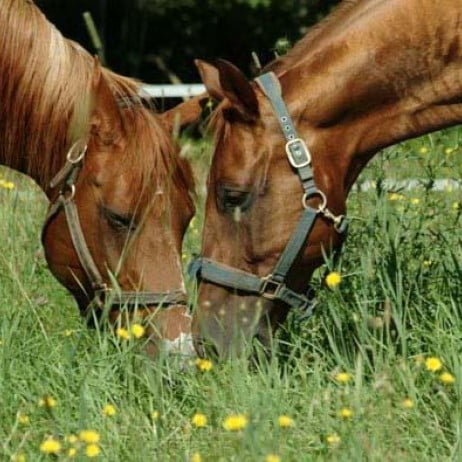
Apr 1, 2020 | Digestive health
Feeding Oils and Fats to Horses – The Natural Suppliers of Omega 3 and 6
Feeding oils and fats to horses is commonplace in today’s modern nutritional practices. As a herbivore, horses are adapted to a diet naturally higher proportionally in Omega 3 fatty acids (ALA) compared to Omega 6 (LA). Omega 3 and 6 are known as the Essential Fatty Acids, meaning the horse cannot manufacture them for itself.
The horse’s natural supply of essential fatty acids usually comes from fresh grass. Although low in total fat (2-4%) a significant proportion of that fat (39-56%) is alpha-linoleic acid (ALA) compared to Linoleic Acid (LA.) The ratio is approx 4:1 ratio of ALA to LA. Once grass is cut and dried to produce hay however, the naturally occurring unsaturated fatty acids are destroyed by oxygen. So, if hay is the main forage source for your horse, you need to add those EFA’s to the diet.
Supplementing with oils or fats that contain higher levels of Omega 3 than Omega 6 has proven to be beneficial to all horses. Especially those that aren’t eating fresh grass pasture for at least 18 hours per day.
Feeding Oils and Fats to horses – What’s the difference?
Oils and fats are essentially the same. It’s just that oils describe fats that are liquid at room temperature, whilst fats are solid at room temperature. There’s plenty of choice when it comes to feeding oils and fats to horses. And they can come in a number of different forms such as oils, seeds, pellets or ground ‘meals’. They’re considered slow release energy sources, which means they gradually release energy into the horse’s blood stream. This helps to reduce the risk of hyperactive behaviour. Feeding oils or fats alongside a good quality fibre can also be of considerable benefit for improving condition. This is because they have twice as many calories as carbohydrates making them very calorie dense. For example, did you know that one cup of oil provides the same amount of digestible energy as approx 0.55kg of oats?
Depending on the source, oil has Digestible Energy levels of 20-38 MJ/kg. This compares to a typical value of 8MJ/kg for hay, 12-14MJkg for super fibres and 9-11MJ/kg for cereals.
Triglycerides and omega 3, 6, and 9
Oils such as linseed, sunflower, corn and soya contain a lot of different fatty, acid-rich substances called triglycerides. Triglycerides themselves are made up of different types of fatty acids, including the omega-6 or omega-3s. They’re often referred to as poly-unsaturated fatty acids (PUFAs).
When it comes to deciding which oil you should be feeding your horse, it’s important to remember that all oils have the same amount of energy and it’s their ratio of Omega 3 and 6 which separates them.
Omega 3 and 6 EFAs play a very important role within the equine diet. They work synergistically within the horse’s body and balancing these essential fatty acids is paramount to optimal digestive health. Research has shown that the appropriate ratio would be in the region of 2-5:1 Om 3:6.
Two very important omega-3 fatty acids
These are eicosapentaenoic acid, (EPA) and docosahexaenoic (DHA). They’re the building blocks for hormones and also have an important role in the following:
- The structure and formation of the wall of red blood cells. This is essential for competition and performance horses where oxygen transportation can be improved by the structure of the red blood cells
- Essential component of soft tissue structure
- Hormone activity
- Central biochemical role
- Energy storage system
- Providing energy that by passes the anaerobic stages that are associated with muscle fatigue and “fast release” energy
- Being an excellent source of concentrated energy
- Physical insulation and protection of body organs
- Maintaining conformity and combatting excessive heat loss
- immune function and tissue repair within the horse’s body
Most oils contain Omega 9. This is a non-essential fatty acid and very little is known about the horse’s requirements. It can be synthesized by the horse from unsaturated fats. However, if Omega 3 and 6 intake is low then of course Omega 9 must also come from the diet.
Feeding Oils and Fats to Horses – The best sources of Omega 3 and 6 and Their Benefits
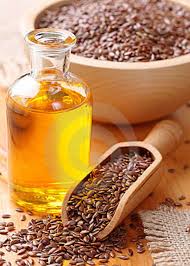
Linseed oil is almost 60% pure Omega-3 fatty acids and is one of the richest plant based sources of Omega-3. Hemp oil contains an Omega 3 fatty acid, stearidonic acid, in addition to an unusual omega-6 fatty acid, gamma-linolenic acid, which behaves like an omega-3. Chia seeds are another high Omega 3 ingredient.
BENEFITS:
- Omega-3 is a natural anti-inflammatory helping to reduce prostaglandins responsible for pain and inflammation in the horse’s body.
- Omega 3 oils have been shown to have an important role in the structure and formation of the wall of red blood cells. Essential for competition and performance horses where oxygen transportation can be improved by the structure of the red blood cells.
DEFICIENCIES:
Deficiencies in Omega 3 can lead to
- hoof problems
- allergic skin conditions.
- temperament issues

 Conversely, Omega 6 is equally important to the equine diet and is most commonly found in corn, canola, rice bran, primrose, and sunflower oils. Soya oil is also a rich source of Omega-6 at almost 50% Omega-6.
Conversely, Omega 6 is equally important to the equine diet and is most commonly found in corn, canola, rice bran, primrose, and sunflower oils. Soya oil is also a rich source of Omega-6 at almost 50% Omega-6.
BENEFITS:
Omega 6 is a natural pro-inflammatory and is essential for immune function and tissue repair within the horse’s body.
EXCESS:
Too much Omega 6 can have adverse implications on your horse’s health for example:
- inflammation in joints and muscles. The ageing joints of older horses are more painful when omega 6 is fed in large amounts.
- tissue damage from oxidative stress caused by inflammation.
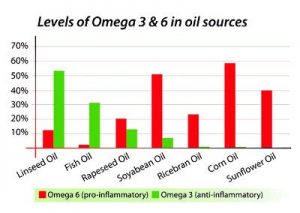
The table left, shows some of the commonly fed oils and their proportion of Omega 3 and 6.
How much should I Feed?
This will depend on your feeding goals. It may take only half a cup of oil a day to add shine to a horse’s coat. However, if you’re adding oil for performance benefits then 1-2 cups of oils for a 500kg horse may be needed. Any supplemental oil should always be added gradually to the horse’s feed to avoid digestive problems. Remember also that when feeding oil, additional vitamin E at a rate of 1IU of vitamin E per 1ml of oil may be required to help prevent peroxidative damage. Some oils may already include this, likewise fat pellets may already have vitamin E included for this purpose.
As with any other nutritional rule, moderation is the key. A daily intake of 2-5% of feed as oil is sufficient for most situations. It can be increased slightly for the onset of winter, or where a moderate to heavy level of activity is anticipated.
Supplementing your Horse with Oils and Fats – Can I feed too much?
Yes. As with any nutrient it’s possible to feed too much. When feeding fats and oils to horses, there are some important considerations to make:
- Be attentive to nutrient imbalances when top-dressing oil onto an existing ration. Eg high levels of fat in the diet may mean a higher need for antioxidants such as vitamin E
- Remember that higher rates of fat inclusion may increase the risk of digestive disturbances.
- Higher rates of fates may reduce calcium absorption via formation of mineral-fat soaps.
- Palatability may also be another factor to consider with some horses disliking oils but accepting it in a ‘meal’ form.
- Be mindful that ponies, donkeys, mules and minis are unable to tolerate high levels of fats.
- Fats shouldn’t be fed to horses that are already overweight/obese, or those prone to hyperlipemia.
- Avoid fats as part of an initial re-feeding programme for starved or severely malnourished horses. Many of these horses will have compromised gastrointestinal and organ function and will have a poor tolerance to digest them.
What’s a good alternative to oil?
Cereals and Fibres
You could fulfill the majority of energy requirements using a combination of cereal and fibre, especially super fibres. But not all horses need or can tolerate cereal feeds. Having said that, it’s actually impossible to feed a diet without fat, as it’s found in most feed stuffs albeit often as a seed meal. In this case small supplements of oil are all that are needed.
A High Quality Feed Balancer Supplement
Feeding a Fibregenix balancer with the correct, balanced level of Omega 3 and 6 fatty acids is a great way to ensure a nutritionally balanced diet. It can take approximately 30 – 90 days until the benefits of feeding these essential fatty acids can be seen. But once your horse’s diet has the optimum levels of Omega 3 and 6, you’ll notice improved overall health and well-being.
Copra – A viable Alternative?
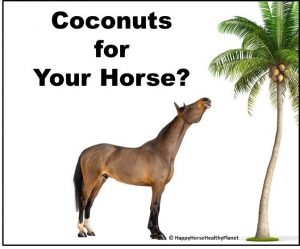 Coconut oil, or more often coconut meal (copra), is commonly added to horses’ diets to promote condition. It’s a saturated fat with virtually no Omega 6 and crucially contains zero omega 3s. Therefore, if you feed this as your only source of fat and your horse has no access to grazing, your horse will become Omega 3 deficient. Coconut oil and copra are more than 90% saturated fatty acids consisting of over 60% medium chain triglycerides which don’t exist in grasses. One therefore has to query the value of feeding a saturated fat which a horse doesn’t usually get in his diet…
Coconut oil, or more often coconut meal (copra), is commonly added to horses’ diets to promote condition. It’s a saturated fat with virtually no Omega 6 and crucially contains zero omega 3s. Therefore, if you feed this as your only source of fat and your horse has no access to grazing, your horse will become Omega 3 deficient. Coconut oil and copra are more than 90% saturated fatty acids consisting of over 60% medium chain triglycerides which don’t exist in grasses. One therefore has to query the value of feeding a saturated fat which a horse doesn’t usually get in his diet…
Fish Oils
Whilst rich in the long chain Omega 3 fatty acids, EPA and DHA, fish oils are higher in LA than ALA and can be contaminated with heavy metals such as copper or mercury and organic pollutants such as PCBs or dioxins. This poses the question as to whether it’s worth the potential risk. Palatability can also be an issue for some horses. After all, a horse doesn’t normally eat fish!
Summary
Horses are very well adapted to utilising oils and fats in their diet, particularly as a source of energy. Always try and follow a horse’s natural herbivorous diet and choose your oil/fat accordingly.
Reviewed and amended Feb 2022
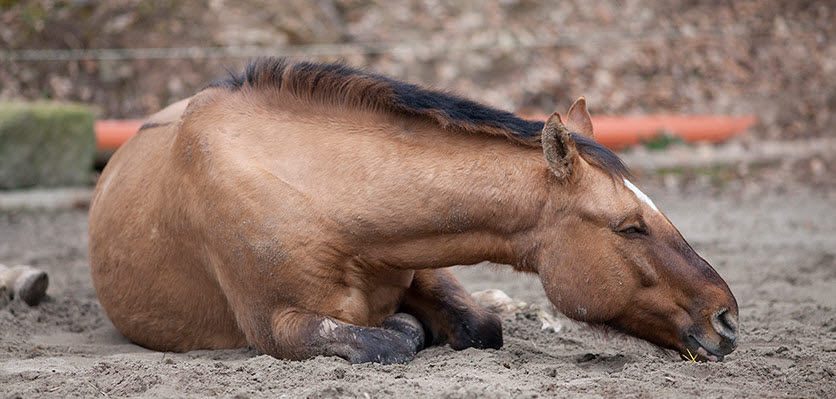
Jan 16, 2020 | Digestive health
Understanding Horse Colic
Understanding colic and knowing how diet management can help prevent it is fundamental for your horse’s health. Furthermore, today’s surgical advances have made it a viable option for some, with improved recovery rates compared to 10 years ago. However, it’s still the nightmare of every horse owner as it remains the leading medical cause of death in horses. Colic is loosely defined as abdominal pain and may range from mild to life-threatening. It can fall into a variety of categories, depending on the specific underlying cause.
Understanding Horse Colic – 4 Common Types
Impaction – caused by a blockage in the intestine
Spasmodic – Characterised by increased intestinal contractions
Tympanic (gaseous) – A build-up of gas in the intestine
Sand – Inflammation or blockage of the intestine resulting from ingested sand
Understanding colic symptoms – what are they?
- Sweating
- Kicking or biting at the stomach
- Lying down or rolling repeatedly
- Uncomfortable, reluctance to eat
- Reduced or no passing of droppings
- Lack of gut noises
- Excessive gut noises/gurgling.
IMPORTANT: If you suspect that your horse has colic, contact your vet straight away.
Understanding colic risk factors
1. Meal Size
Larger meals move more quickly through the digestive system meaning the horse is less able to fully utilise the feed. This increases the risk of starch and sugars over-spilling into the hindgut. For this reason, you should limit your horse’s meal size to 0.4kg per 100kg bodyweight.
2. Dietary Changes
When it comes to understanding colic, dietary change is the strongest and most consistently reported risk factor. These can be changes in batch or type of forage or concentrate. Management changes, eg stabling and turnout time. Quantity and frequency of feeding – all can be associated with an increased risk.
The risk is significantly higher two weeks after a change in forage and/or concentrate feed. And with multiple changes in either throughout the year, it increases the risk further.
Adapting to a new concentrate or forage feed, is now thought to take a minimum of three weeks. Particularly if there’s a significant difference in the protein, starch and/or sugar level. As such, it’s recommended you make feed changes slowly over 2 – 4 weeks to reduce the challenge to the gut.
3. High Levels of Cereals or High Starch Feeds
Feeding your horse more than 5kg of concentrates per day has been associated with a greater than 6 times increase in colic risk. This includes diets containing more than 2.7kg of oats. Unfortunately, horses on high starch or cereal diets are often further compromised by having less than ideal forage intake. Additionally, they may have restricted turnout time and undergo higher levels of exercise.
Cooking cereals by micronisation or extrusion gelatinises the starch content. This is said to improve utilisation in the foregut which reduces the risk of undigested starch entering the hindgut.
4. Forage
It’s generally found that a recent change in forage is more harmful than a recent change in grain or concentrate. This is probably because forage represents the largest part of the diet. There’s also, unsurprisingly, an increased risk associated with forage of poorer nutritional and hygienic quality, along with limited grazing.
5. Hydration Levels
Dehydration is one of the most common causes of colic for horses that are travelling and working hard. Dehydration compromises the bacterial population, normal gut function and motility, which emphasises the importance of electrolyte supplementation in working horses.
Understanding horse colic risk periods
Changes in management tend to occur simultaneously with the seasons, typically autumn and spring. This is when the risk of colic may be increased. A change in forage (grass/hay/haylage) can increase the risk most significantly, Therefore it’s important that you’re aware of practices that can help reduce this:
Spring
Typically a time of transition from hay/haylage to grass, which represents a major change in moisture and fibre levels. The fibre content in spring grass is much lower than in hay or haylage. This makes it a major change for the horse’s digestive system to cope with.
- Introduce to spring pasture slowly and/or increase turnout time gradually.
- Continue to offer hay/haylage in the paddock. Alternatively, bring the horse in for a few hours with access to hay/haylage to boost fibre intake levels.
Autumn/winter
Similarly to spring, the main consideration is a change in moisture content, as well as a change in nutrient levels.
- Again, the main defence is to make the forage changeover gradual. Where possible, it should ideally be over 3 – 4 weeks.
- Damping hay will ease the transition from grass, with its high moisture content, to hay with low moisture content. With haylage – this may be less of a concern as the moisture content is higher than that of hay.
- The grass will always provide significantly more nutrients than hay/haylage. So you need to be aware of this and make changes over a long period of time.
General Feeding Recommendations
- If you’re feeding cereals, only use cooked cereals. Preferably micronised or extruded to make their starch content more digestible. Oats are the exception as they’re generally fed “raw” and they’re easily chewed. Their simpler starch structure is also more easily digested than other cereals.
- Make any dietary changes slowly over 2 – 4 weeks.
- Feed plenty of fibre. Fibre helps maintain a healthy microbial population and pushes out any excess gas which sits in the gut. It also increases pH of hindgut compared to starch and retains water which will reduce incidence of dehydration.
- Keep meal sizes small.
- Where possible, keep starch and sugar levels low.
- Feed digestive enhancers eg those found in Fibregenix balancers, during high-risk periods.
Feeding Recommendations – Tympanic (gaseous) Colic
- Hay is preferable over haylage products which, like grass, ferments more quickly in the hindgut producing more gas.
- Take care with access to spring or rich pasture.
- Avoid long spells of inactivity and keep your horse moving to encourage gut motility. Exercise and turnout on poorer grazing, so he has to move about to “search” for grass.
- Where possible, provide ad-lib forage. Keeping the fibre moving through the gut helps to remove gas.
- For good-doers, divide the hay into small rations throughout the day to keep forage passing through. Small-holed nets will extend eating time and keep the horse moving/foraging.
- Avoid feeds that ferment more quickly and therefore produce more gas in the gut. Feed meadow hay – not too soft and green but also not too stalky and fibrous – instead of haylage.
Feeding Recommendations – Impaction Colic
- With any sort of impaction colic, dental health is always an essential consideration. This can’t always be helped, particularly with the older horse. So make sure that any fibre sources you feed your golden oldie are easy to manage.
- Another contributing factor can be a lack of water intake/moisture in the diet. Monitor this by using buckets in preference to automatic feeders. This can be of particular concern during the winter when horses tend to drink less.
- Plenty of water and physical movement (e.g. turnout and/or exercise) helps to promote gut motility, keeping things moving.
- If feeding hay, ensure it’s soft and digestible. Haylage can be an option as it’s typically more digestible. Grass is the most suitable forage as it’s the most digestible of all.
Understanding horse colic and feeding after colic surgery
If major resections have occurred, the subsequent diet should take account of the remainder of the gut. Therefore the feeding regime depends on the type of surgery performed. If less than 50% of the small intestine is removed, usually no special requirements are necessary. However, the site of the surgery in the hindgut and amount of gut removed influences the choice of diet.
For hindgut resection:
- As the hindgut is primarily responsible for fibre digestion, if it’s been compromised, forage and pasture must be of good quality. So choose soft leafy earlier cut hay, which is easier to digest, rather than coarser later cut.
- If necessary, provide additional good quality fibre sources in a separate bucket as forage alternatives.
- Feed the recommended amount of an appropriate compound feed or Fibregenix balancer to provide a fully balanced diet.
- Bacteria in the hindgut are the horse’s principal producers of B vitamins. Colic and/or surgery are likely to compromise the microbial population and therefore the supply of these important vitamins. Supplementing with a probiotic and prebiotic can help restore the bacterial balance. A Fibregenix balancer is ideal as it contains superior forms of pre and probiotics. Furthermore, it’ll provide a useful B vitamin boost along with a range of key minerals and trace elements.
For small intestine resection:
- This is where starch and sugar are digested and absorbed. When this has been compromised, dietary starch and sugar levels need to be kept as low as possible to start with. This means it’s best to avoid mixes so look for feeds which contain reduced amounts of starch.
- Soaked high fibre feeds eg Speedibeet beet pulp
If the ileum is affected:
This part of the small intestine is where most of the absorption of fats and fat-soluble vitamins takes place. Such as vitamins A, D and E. Calcium is also absorbed here and vitamin D influences the efficiency of calcium uptake. Therefore any problems in this area may have a knock-on effect on the horse’s metabolism.
- If compromised, the vet may need to inject these vitamins and dietary levels of calcium may need adjusting/increasing.
- Avoid coarse forages, even after full recovery.
If the ileum is unaffected:
Feed oil as a concentrated source of calories to help keep meal sizes small.
NOTE: For any resections try to provide small concentrate meals and keep feeds as digestible as possible.
Reviewed and amended Feb 2022
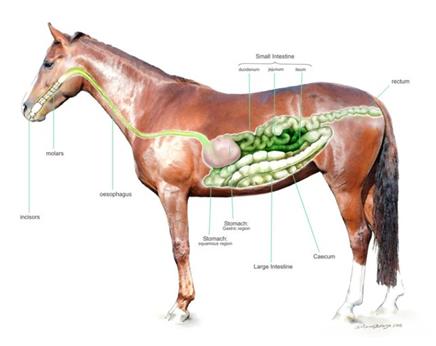
Nov 25, 2019 | Digestive health
HindGut Health supplements with Fibregenix
Compared to a few years ago there’s now a plethora of supplements on the market aiding hindgut health. In fact, it’s currently one of the hottest topics around. Most are in the form of yeast probiotics and prebiotics and some are even live bacterial probiotics. But are they really useful or just another unnecessary expensive supplement? Can they do more harm than good?
Well, actually there are plenty of instances when hindgut health supplements are extremely valuable for your horse. Good health always starts with a healthy gut. But how do you know which ones are really good and which are just a waste of money?
At Fibregenix HQ, in consultation with world-leading nutritional scientists, we sourced those with the most robust scientific research and data behind them. After all, your horse is precious to you – so it makes sense to ensure he’s getting the maximum benefit to keep him in the peak of health.
HORSE HINDGUT HEALTH SUPPLEMENT – LIVE PROBIOTIC YEASTS, WHAT ARE THEY?
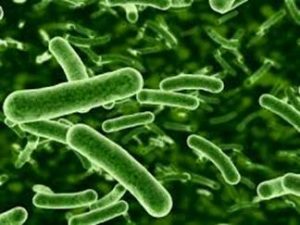
The idea behind adding a probiotic yeast to a horse’s diet is to help improve fibre digestibility. The key role they play in equine hindgut health is to help promote the production of bacteria which digest cellulose. Or in layman’s terms – improving fibre digestion.
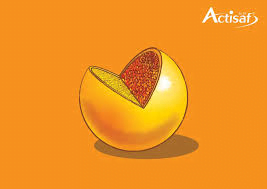
GOOD, BETTER, BEST…
Live probiotic yeasts contain a thick cell wall which allows them to travel through the horse’s digestive tract to the large intestine where they are utilized and then excreted. Feeding a live yeast probiotic helps promote the production of bacteria which digest cellulose in the horse’s hindgut, improving fibre digestibility. They require daily supplementation to ensure they are replenished in the large intestine.
Some probiotics are good, some are better, and the best are very, very good. However, it’s the specific strain of yeast culture and the level included that differentiates one from another. The effectiveness of a yeast probiotic is only as good as how many yeast cells make it to the intestine intact and alive.
Fibregenix balancers contains Levucell SC Titan. The patented TITAN technology uses microencapsulation to coat the probiotic. This ensures that the probiotics will remain viable and stable through the challenges of the supply channel until they reach the horse. Eg, during freight, warehouse conditions, compatibilities with other ingredients in premixes/feed, temperature/moisture/pressure, etc. Equally important, the microencapsulation also ensures the viability and stability of the probiotic during its transit through the foregut to the hindgut.
Many studies have been conducted looking at the effects of Levucell SC Titan. Trials performed in horses proved that Levucell produced a significant improvement in fibre and overall dry matter digestibility. It does this by affecting the horse’s microflora ie stimulating the growth of cellulolytic bacteria populations. The visible benefits for horses include optimization of forage, improved feed utilisation – and therefore weight gain – performance and general well-being.
Trials also showed that Levucell not only increases fibre digestibility but also reduces lactic acid accumulation. By maintaining a more stable PH within the normal range (around 7), the horse’s health and welfare is improved.
Hindgut Fermenters
Horses have evolved as monogastric hindgut fermenters That is, they ferment the fibre they eat at the end of the digestive system – the caecum and colon. They’ve evolved to consume small, fibre-rich meals on a continual basis. This is in direct contrast to the high starch diet of today’s modern horse, which is difficult to digest. This is because horses don’t produce large quantities of amylase, an enzyme that breaks down starch into glucose.
Horse Hindgut Health – The Consequences of feeding a large starch meal
If a horse is fed small starch-rich meals, it’s unlikely that there will be any consequences. But if large quantities of starch are fed in any one meal, this gets pushed through the gut with increasing speed. Without having been broken down sufficiently by saliva or gastric juices, starch then reaches the caecum. It’s then fermented by bacteria producing lactic acid rather than beneficial volatile fatty acids produced from the fermentation of fibre.
Hindgut Acidosis
When lactic acid is produced, the PH levels in the hindgut drop. Known as a state of hindgut acidosis, it results in many potential health issues. The low PH effectively kills off good bacteria that would normally digest fibre. This can lead to complications such as colic, caecal and colonic ulcers and laminitis. Studies looking at the effects of Levucell SC Titan found supplementation with the live yeast could double fibre digestibility. It also aids in reducing lactic acid accumulation maintaining a more stable gut PH keeping it within the normal range (around 7). This improves both horse hindgut health and overall welfare.
MOS – WHAT IS IT?
MOS is short for mannan oligosaccharides. There are many different MOS products. Some are just crude cell wall preparations made from yeast leftover from yeast extract (the inside of the yeast). Another example is ground, dried brewer’s yeast. These basic yeasts have little or no data to support their use. Furthermore, they’re classified as feed ingredients, not additives, with no licensing required.
The most effective and reliable MOS products are licenced and manufactured specifically for the feed industry. We’ve included Agrimos MOS, tested for its bacterial binding capacity as part of the quality control process. And it provides high, consistent and guaranteed levels of mannan oligo-saccharides and β-glucans.
HOW DO THESE HORSE GUT HEALTH SUPPLEMENTS WORK?
AGRIMOS has a long history in the market and is well-documented for its efficiency in binding undesirable bacteria and certain mycotoxins. It helps maintain intestinal integrity while improving microflora balance and animal performance.
It works by mimicking sites on the gut wall that pathogenic (bad) bacteria bind to. Once bound to the MOS, these bacteria are rendered useless and flushed out of the gut. MOS also provides a double benefit to a horse’s hindgut health by stimulating the immune system to provide support against infections. MOS products aren’t always necessary if your horse has a healthy gut environment. However, today’s modern horse is placed under a lot of stress. Recovery from illness, training, travelling, competing, large amounts of hard feed. If your horse fits any of these categories, he’ll benefit from the inclusion of Agrimos MOS in his diet.
FOS PREBIOTIC – WHAT IS IT?
FOS stands for fructooligosaccharide. The FOS found in Fibregenix is a prebiotic comprising of short-chained fructooligosaccharide. Research has shown that harmful bacteria such as E. coli and Clostridium Perfringens cannot utilise FOS. And this means that beneficial species are able to competitively exclude them. FOS seems to be particularly useful when horses are suffering with diarrhoea, presumably because numbers of C. perfringens are reduced. FOS also provides an energy source for the beneficial bacteria already living in the horse’s hindgut. In turn, this creates a healthier digestive tract, unsuitable for the growth of potentially pathogenic bacteria.
HOW CAN THIS FOS BENEFIT MY HORSE?
Scientific support has proven that this specific FOS may:
-
Positively modify the gut microflora
-
Enhance digestive health
-
Reduce the risk of digestive upsets
-
Reduce putrefactive compound production
-
Strengthen the immune system
-
Improve insulin sensitivity in the obese horse.
Including both MOS and FOS prebiotics as part of Fibregenix’s horse gut health supplement provides a synergistic effect supporting overall gut health.
NUCLEOTIDES – WHAT ARE THEY?
Nucleotides are highly innovative when it comes to horse gut health supplements. They’re the building blocks for RNA and DNA. All feed contains a level of nucleotides. However in ingredients used for horse feeds they’re at low levels, with very low availability (around 5-10%). They’re also hard to digest due to their protein coating.
Very few companies are giving horse owners the added benefits from feeding Purified Nucleotides to their horses. Fibregenix is the first major feed balancer supplement company in Australia to include them. Prime Original, Platinum Pro and Lami Low-Cal contains purified nucleotides as part of the horse gut health supplement pack. This specific blend of purified nucleotides has a 95% availability rate to balance the limited levels available in the current diet.
TO LEARN MORE ABOUT THE BENEFITS OF WHAT ADDITIONAL NUCLEOTIDES IN YOUR HORSE’S DIET CAN DO CLICK HERE.
Reviewed and updated July 2023
 The demand for feed balancers reflects a greater understanding of nutrition and gut health. We’re all aware of the importance of providing a more natural, high-fibre diet. Fibregenix feed balancers do much to support this way of feeding. They do this by promoting good hind-gut function through the inclusion of ingredients such as yeast cultures.
The demand for feed balancers reflects a greater understanding of nutrition and gut health. We’re all aware of the importance of providing a more natural, high-fibre diet. Fibregenix feed balancers do much to support this way of feeding. They do this by promoting good hind-gut function through the inclusion of ingredients such as yeast cultures.
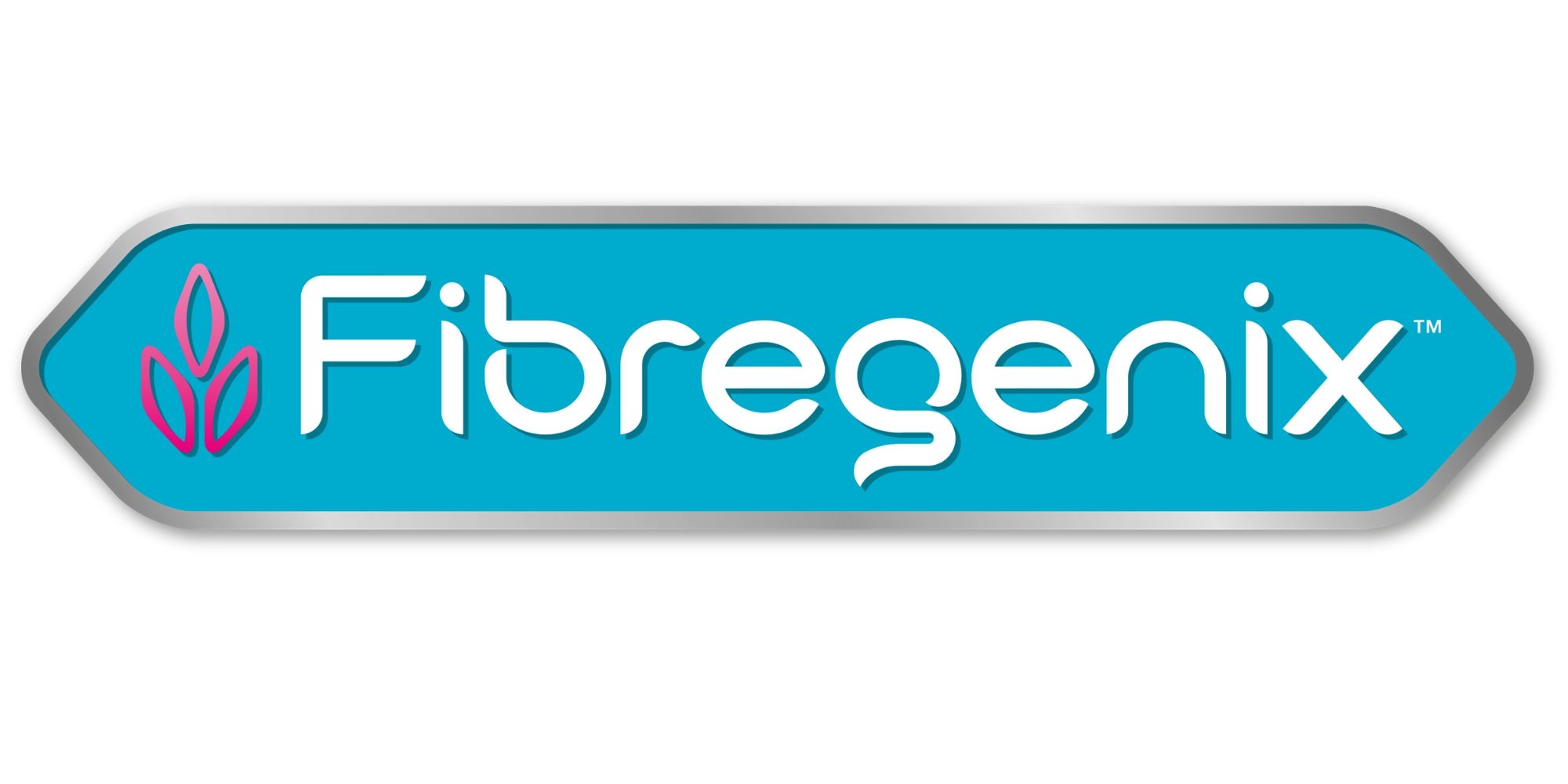








 Conversely, Omega 6 is equally important to the equine diet and is most commonly found in corn, canola, rice bran, primrose, and sunflower oils. Soya oil is also a rich source of Omega-6 at almost 50% Omega-6.
Conversely, Omega 6 is equally important to the equine diet and is most commonly found in corn, canola, rice bran, primrose, and sunflower oils. Soya oil is also a rich source of Omega-6 at almost 50% Omega-6.
 Coconut oil, or more often coconut meal (copra), is commonly added to horses’ diets to promote condition. It’s a saturated fat with virtually no Omega 6 and crucially contains zero omega 3s. Therefore, if you feed this as your only source of fat and your horse has no access to grazing, your horse will become Omega 3 deficient. Coconut oil and copra are more than 90% saturated fatty acids consisting of over 60% medium chain triglycerides which don’t exist in grasses. One therefore has to query the value of feeding a saturated fat which a horse doesn’t usually get in his diet…
Coconut oil, or more often coconut meal (copra), is commonly added to horses’ diets to promote condition. It’s a saturated fat with virtually no Omega 6 and crucially contains zero omega 3s. Therefore, if you feed this as your only source of fat and your horse has no access to grazing, your horse will become Omega 3 deficient. Coconut oil and copra are more than 90% saturated fatty acids consisting of over 60% medium chain triglycerides which don’t exist in grasses. One therefore has to query the value of feeding a saturated fat which a horse doesn’t usually get in his diet…



